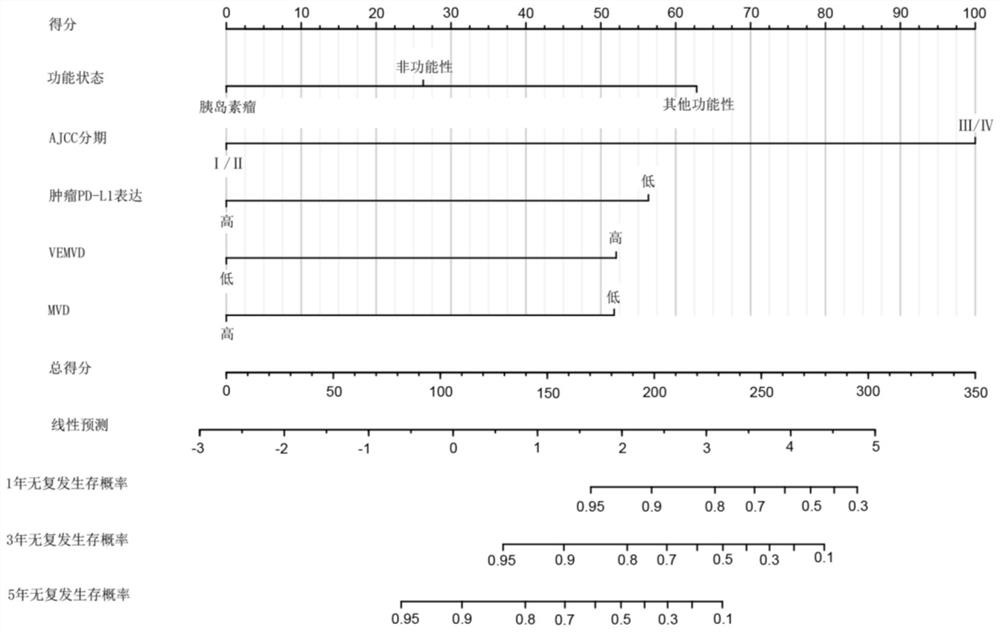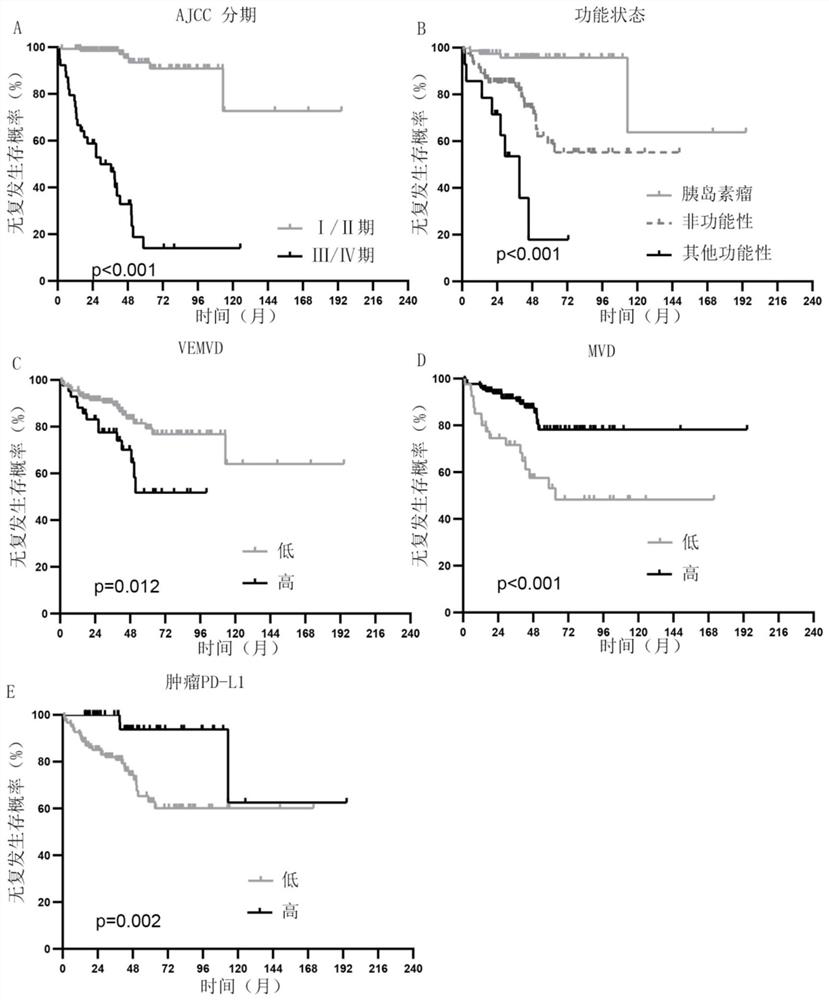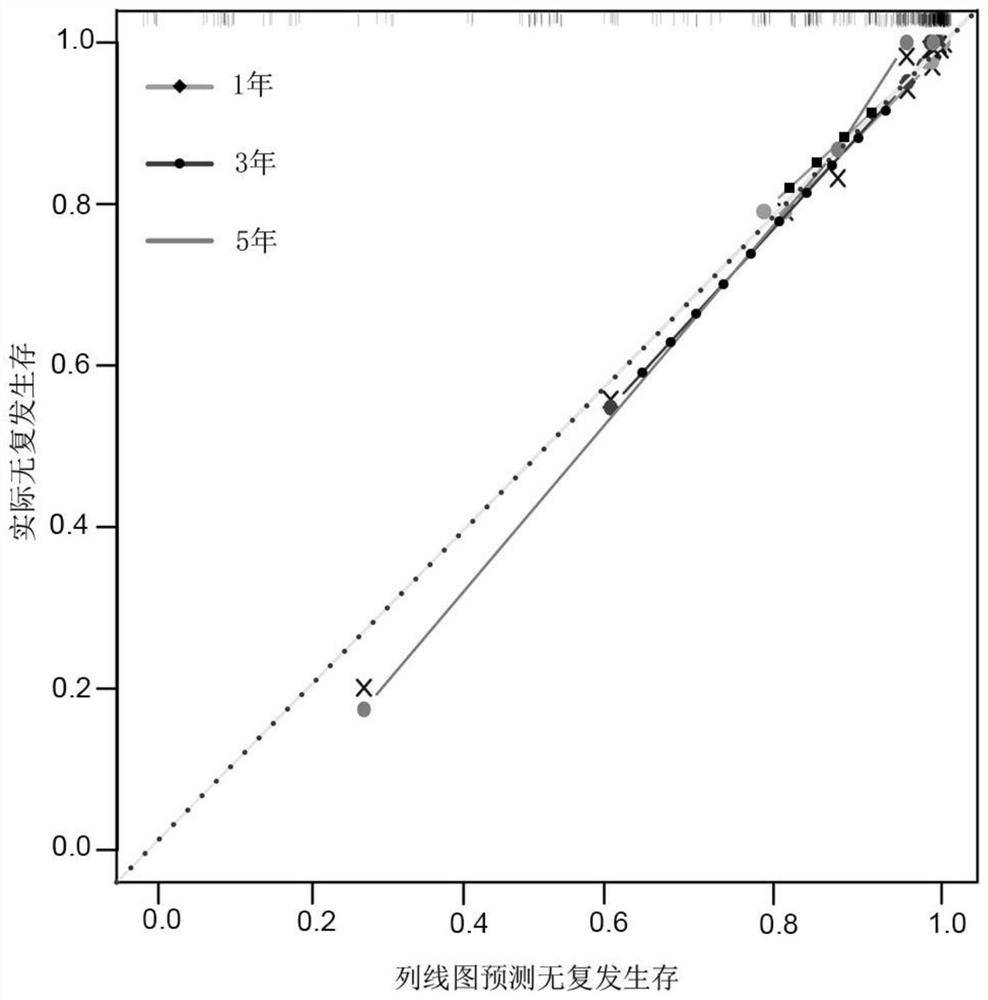PNET recurrence risk prediction model based on basic clinicopathological information and VISTA testing
A risk prediction and model technology, applied in the field of biomedicine, which can solve the problems that the grading system cannot distinguish between groups, it is difficult to consider the interval and method of follow-up in a targeted manner, and recurrence and metastasis are prone to occur.
- Summary
- Abstract
- Description
- Claims
- Application Information
AI Technical Summary
Problems solved by technology
Method used
Image
Examples
Embodiment Construction
[0046] The following examples are used to illustrate the present invention, but are not intended to limit the scope of the present invention. Unless otherwise specified, the technical means used in the embodiments are conventional means well known to those skilled in the art.
[0047] 1. Research object
[0048] The research objects of this example are the paraffin-embedded specimens of primary tumor tissue resected from G1 and G2 pancreatic neuroendocrine tumors. Inclusion criteria: There is a clear pathological diagnosis of pancreatic neuroendocrine tumor; this operation is the first resection of pancreatic neuroendocrine tumor; according to the fifth edition of the WHO classification of digestive system tumors, it is classified as G1 or G2; pathological sections and paraffin specimens are complete; follow-up time is not short At 12 months; with complete clinical information.
[0049] Exclusion criteria: The fifth edition of the WHO classification of digestive system tumor...
PUM
 Login to View More
Login to View More Abstract
Description
Claims
Application Information
 Login to View More
Login to View More - R&D
- Intellectual Property
- Life Sciences
- Materials
- Tech Scout
- Unparalleled Data Quality
- Higher Quality Content
- 60% Fewer Hallucinations
Browse by: Latest US Patents, China's latest patents, Technical Efficacy Thesaurus, Application Domain, Technology Topic, Popular Technical Reports.
© 2025 PatSnap. All rights reserved.Legal|Privacy policy|Modern Slavery Act Transparency Statement|Sitemap|About US| Contact US: help@patsnap.com



